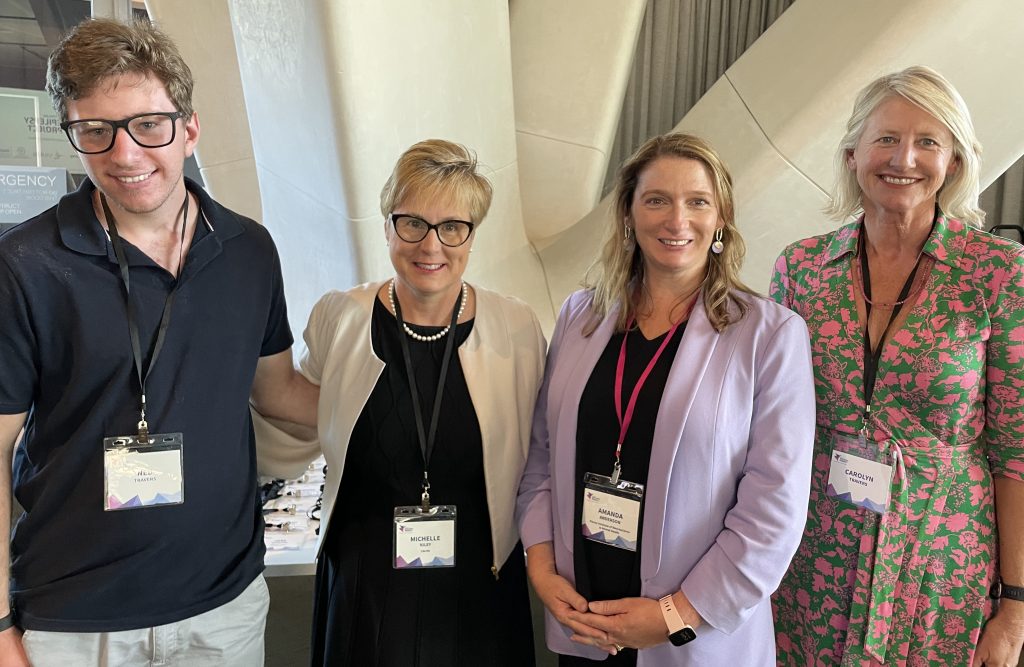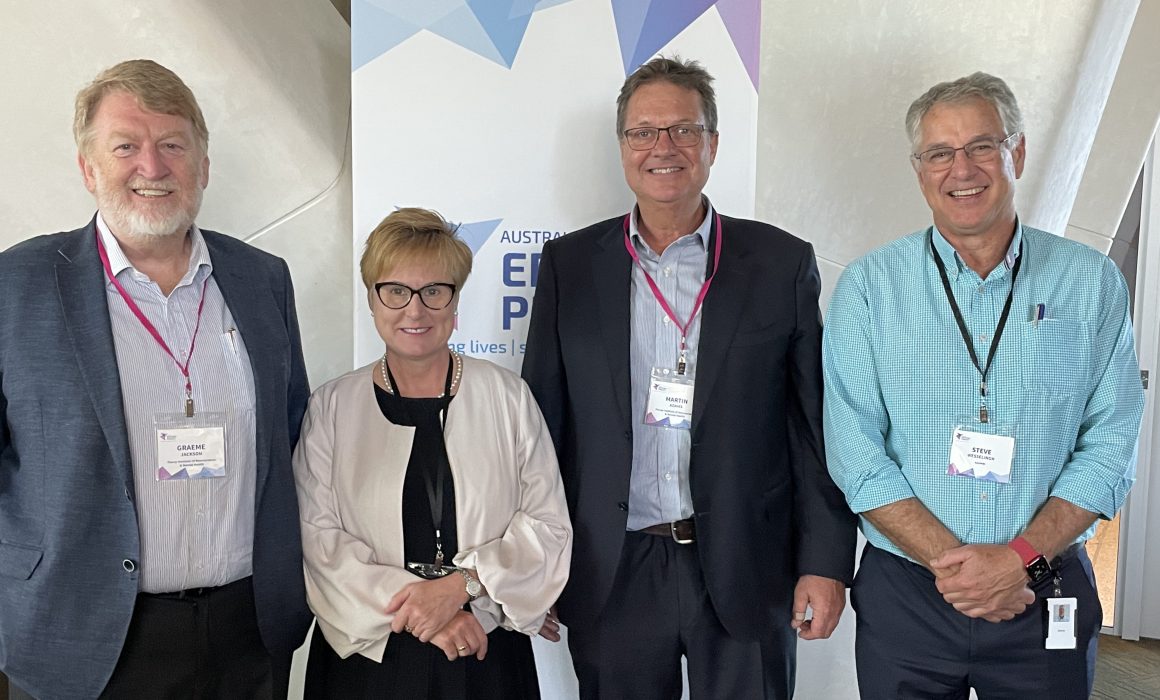NIF’s SAHMRI Node becomes second Hub of the Australian Epilepsy Project
[Image: Prof Graeme Jackson, AEP Chief Investigator, Dr Michelle Kiley AM, Director of Epilepsy Services, CALHN and Lead Epileptologist AEP South Australia, Martin Adams, Chair of the Florey Board, The Florey Institute of Neuroscience and Mental Health and Prof Steve Wesselingh, Executive Director SAHMRI]
ICYMI, an Australian Epilepsy Project (AEP) Hub has opened at SAHMRI – South Australia’s independent not-for-profit health and medical research institute, and National Imaging Facility’s (NIF) second node to join the national multidisciplinary collaboration to improve epilepsy outcomes.
AEP’s first Hub was established at NIF’s Node at the Florey Institute of Neuroscience and Mental Health in Melbourne and the SAHMRI Hub will provide magnetic resonance imaging (MRI) scanning facilities and expertise to support this important initiative in Adelaide.
Epilepsy affects over 150,000 Australians, and its expenditure burden on the national health system is around $333M each year.

[Image: Ned Travers, AEP Lived Experience Ambassador South Australia, Dr Michelle Kiley AM, Director of Epilepsy Services CALHN and Lead Epileptologist AEP South Australia, Amanda Anderson, AEP Lived Experience Ambassador and Participant Lead and Carolyn Travers, AEP Lived Experience Ambassador South Australia]
The AEP aims to develop a critical resource to progress epilepsy research to reduce diagnosis uncertainty and facilitate fast-tracking of optimal treatment by combining advanced imaging, genetics, cognition, and artificial intelligence (AI).
AEP’s Chief Investigator, Professor Graeme Jackson said the ultimate aim of the AEP is to improve the standard of care and change the lives of people with epilepsy.
“Epilepsy is life-long condition and we need life-long solutions. Using algorithms, imaging and rich data we can extract insights to predict patterns in epilepsy and create individualised treatment plans for patients. This is an exciting new standard of care that we’ll be able to offer people living with epilepsy,” Prof Jackson said.
The AEP program has been developed using novel advanced imaging techniques with AI and machine learning, supported by NIF’s world-class infrastructure, which will provide the highest quality of data to epilepsy research.
NIF CEO Prof Wojtek Goscinski said the geographical expansion of the project will drive major advances in decision support tools to guide diagnosis and highlight opportunities for precision treatment for epilepsy, while addressing the disparity in epilepsy research in Australia’s diverse population.
“NIF’s national network of world-class human MR expertise and infrastructure will enable scanning across the country, in alignment with our impact goals addressing health equity for all Australians” Prof Goscinski said.
“It’s a privilege for NIF to support this life-changing project at our node at the Florey for patients in Victoria, and now SAHMRI for patients in South Australia,” Prof Goscinski said.

[Image: Dr David Vaughan, AEP Imaging Lead and Clinician, Paul Lightfoot, AEP Operations Lead, Jemima Gore, Operations Officer, SAHMRI Clinical Trials Platform, Lisa Carne, SAHMRI Operations Manager and Dr Karen Best, Director, SAHMRI Clinicial Trials Platform]
SAHMRI Clinical Trials Platform Director Dr Karen Best said enabling Adelaide’s medical research sector to engage with national initiatives like the AEP is a key reason that SAHMRI’s Clinical Trials Platform exists.
“We’re proud to be able to help at all stages of the project’s SA-based activities, from coordinating patient enrolment to making connections for diagnostic testing at facilities like the SAHMRI Clinical Research Imaging Centre.”
In addition to the AEP’s expansion to South Australia, Hubs in Queensland and New South Wales are set to launch in mid-2023.
Want to join the Australian Epilepsy Project? Ask your neurologist for a referral.
People in South Australia as well as Victoria living with epilepsy can be referred into the hub for advanced testing, free of charge, as part of their participation in the AEP. Find out more at epilepsyproject.org.au



